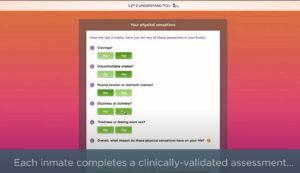Addressing substance misuse and offending behaviour together
Most readers of this blog are concerned with desistance from offending, recovery from substance misuse dependency — or both.
So today’s post may be of particular interest.
It summarises a recent paper by the team behind the Breaking Free digital drug recovery interventions and was selected by the Journal of Criminological Research, Policy and Practices editorial team as the Outstanding Paper in the 2017 Emerald Literati Network Awards for Excellence.
Authored by Sarah Elison, Glyn Davies, Jonathan Ward, Samantha Weston, Stephanie Dugdale and John Weekes:
Using the “recovery” and “rehabilitation” paradigms to support desistance of substance-involved offenders: exploration of dual and multi-focus interventions provides an overview of the links between substance use and offending, and the burgeoning literature around the parallel processes of recovery and rehabilitation.
Purpose of the paper
The authors argue, in my view quite correctly, that the links between substance use and offending are well evidenced in the literature, and that increasingly, substance misuse recovery is being seen as a central component of the process of rehabilitation from offending, with substance use identified as a key criminogenic risk factor.
In recent years, research has demonstrated the commonalities between recovery and rehabilitation, and the possible merits of providing interventions to substance-involved offenders that address both problematic sets of behaviours. The paper points out that alongside the growing literature around the identity and other changes that occur during the process of desistance from crime during offender rehabilitation, so too the concept of “recovery” has increasingly become accepted within the substance misuse sector as a realistic treatment outcome. As with desistance, the process of recovery from substance use may occur naturally alongside changes to social and situational circumstances, such as beginning a new relationship or moving to a new area, in addition to more internal, subjective changes occurring during the recovery process, such as “maturing out” of substance use across the life course
As stated, the purpose of the paper is to look at the practical implications of addressing both behaviours together.

Approach
This conceptual approach of addressing both behaviours together is set out as the rationale for a new treatment approach for substance–involved offenders, Breaking Free Online (BFO), which has recently been provided as part of the “Gateways” throughcare pathfinder in a number of prisons in North-West England.
The BFO programme contains specific behaviour change techniques that are generic enough to be applied to change a wide range of behaviours, and so is able to support substance-involved offenders to address their substance use and offending simultaneously.
Findings
The authors argue that this dual and multi-target intervention approach has the potential to address multiple, associated areas of need simultaneously, streamlining services and providing more holistic support for individuals, such as substance-involved offenders, who may have multiple and complex needs.
Practical implications
Given the links between substance use and offending, the authors argue that is beneficial to provide multi-focussed interventions that address both these behaviours simultaneously, in addition to other areas of multiple and complex needs.
They specifically focus on digital technologies which provide an opportunity to widen access to such multi-focussed interventions, through computer-assisted therapy delivery modalities.
Additionally, using digital technologies to deliver such interventions can provide opportunities for joined-up care by making interventions available across both prison and community settings, following offenders on their journey through the criminal justice system.
Conclusion
Regular readers will be aware of the recent surge in the development of advanced digital technologies for a wide-range of issues and problems. Some are standalone services, more are designed to complement more traditional individual and groupwork therapeutic approaches. [You can see a variety of these interventions and other technological innovations in the justice and substance misuse sectors here.]
Perhaps the biggest benefit of this sort of digital technology in the criminal justice system is the ease with which service users can pick up and continue the programme despite being transferred around the prison system or being released or re-imprisoned.








